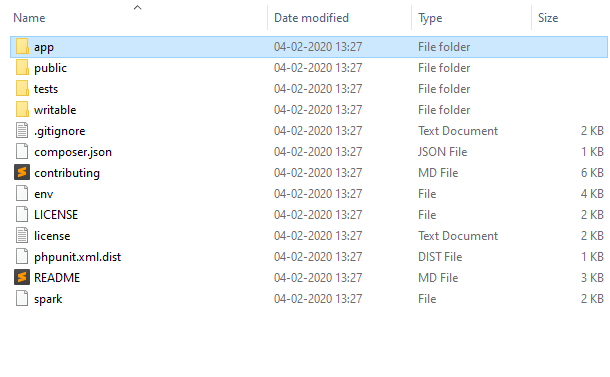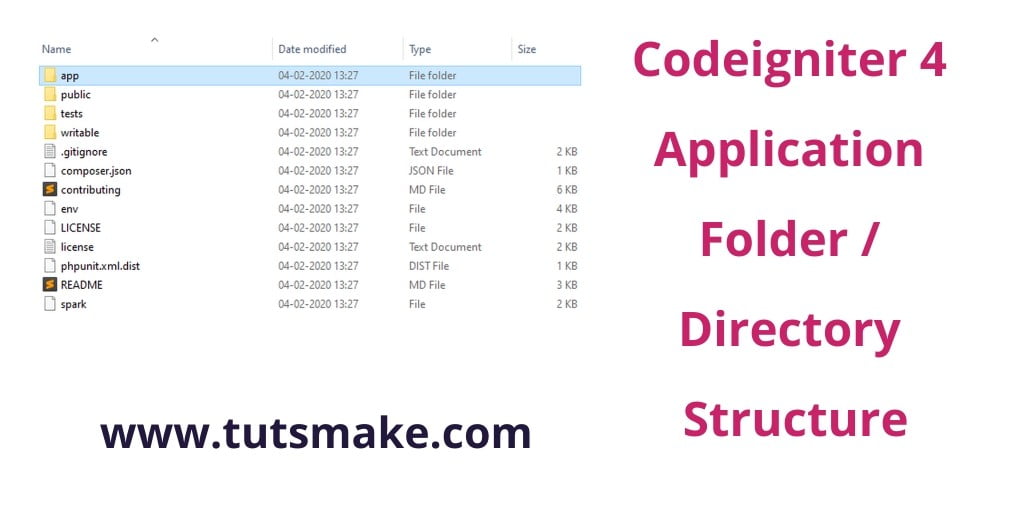In this tutorial, we will show you the new Codeigniter 4 application directory/folder structure.
Codeigniter 4 Application Folder Structure
Let’s see below folder/directory structure of the Codeigniter 4 framework:
Folder / Directories in Codeigniter 4
When you have downloaded or installed Codeigniter 4 new version in your local webserver, you looks like Codeigniter 4 new directory structure:

A fresh install has six directories:
/app/system/public/writable-
/tests /docs
Each of these directories has a very specific part to play.
1. /app
The app directory is where all of your application code lives. This comes with a default directory structure that works well for many applications. The following folders make up the basic contents:
- /Config Stores the configuration files
- /Controllers Controllers determine the program flow
- /Database Stores the database migrations and seeds files
- /Filters Stores filter classes that can run before and after controller
- /Helpers Helpers store collections of standalone functions
- /Language Multiple language support reads the language strings from here
- /Libraries Useful classes that don’t fit in another category
- /Models Models work with the database to represent the business entities.
- /ThirdParty ThirdParty libraries that can be used in application
- /Views Views make up the HTML that is displayed to the client.
2. \system
This directory stores the files that make up the framework, itself. While you have a lot of flexibility in how you use the application directory, the files in the system directory should never be modified. Instead, you should extend the classes, or create new classes, to provide the desired functionality.
All files in this directory live under the CodeIgniter namespace.
3. public
The public folder holds the browser-accessible portion of your web application, preventing direct access to your source code. It contains the main .htaccess file, index.php, and any application assets that you add, like CSS, javascript, or images.
This folder is meant to be the “web root” of your site, and your web server would be configured to point to it.
4. writable
This directory holds any directories that might need to be written to in the course of an application’s life. This includes directories for storing cache files, logs, and any uploads a user might send. You should add any other directories that your application will need to write to here. This allows you to keep your other primary directories non-writable as an added security measure.
5. tests
This directory is set up to hold your test files. The _support directory holds various mock classes and other utilities that you can use while writing your tests. This directory does not need to be transferred to your production servers.
6. docs
If this directory is part of your project, it holds a local copy of the CodeIgniter4 User Guide.
